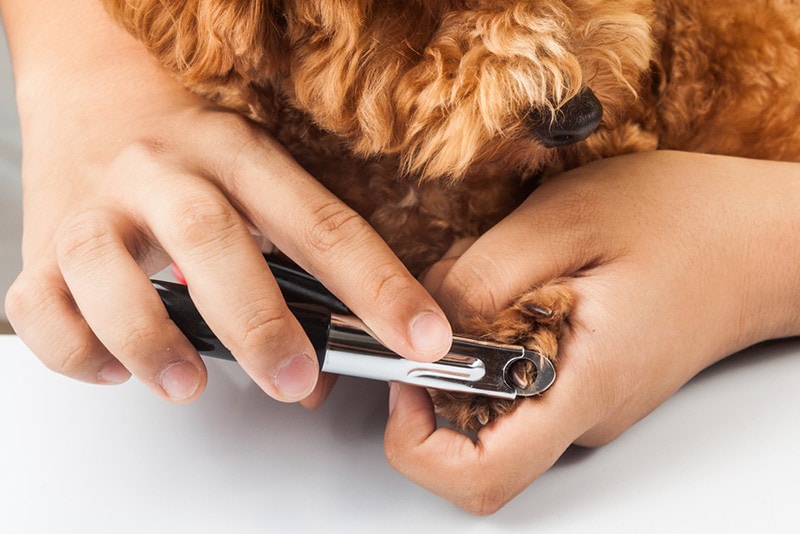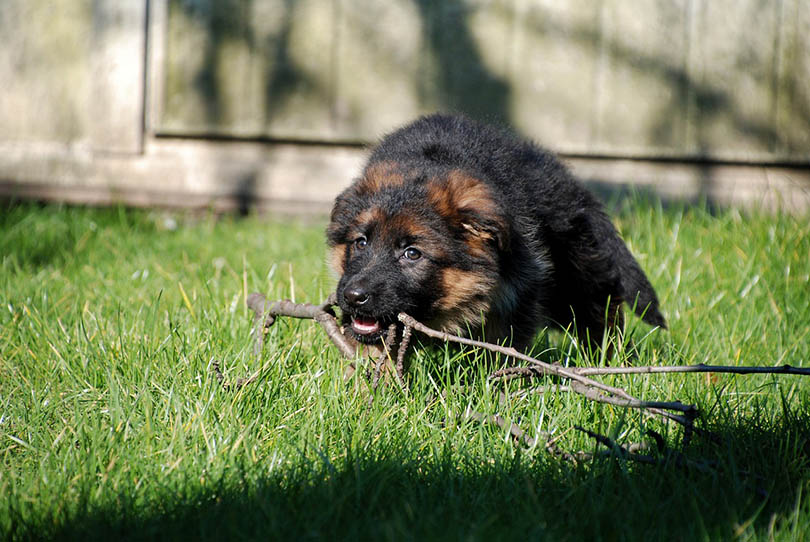Blue Doberman: Pictures, Facts & History
Updated on

Click to Skip Ahead
Doberman Pinschers are striking dogs with a sleek and elegant physique and a proud but loving temperament. They come in several colors but are most well known for their black and rust-colored coats.
But did you know that there are Dobermans with blue and rust coats too? In this article, we get into the history and popularity of this gorgeous dog, along with other information about the Blue Doberman Pinscher.
The Earliest Records of Dobermans in History
Doberman Pinschers were originally bred in Germany around the 1890s. A tax collector and dog breeder named Louis Dobermann found the job of collecting taxes rather hazardous, so he decided to breed a loyal and dependable dog that would act as a protector for him when going from house to house.
No one knows for certain what breeds make up the Doberman, but it’s believed that the Rottweiler, German Pinscher, a few smooth-coated herding dogs, and the Black and Tan Terrier (a now-extinct early terrier), among others, were probably used for creating the Doberman.
The original Doberman was much more aggressive and larger than the breed that we know today. The U.S. Marine Corps adopted these dogs during World War II to serve alongside the Marines. They were nicknamed the USMC’s Devil Dogs, and one dog in particular, Cappy, saved hundreds of soldiers’ lives during the Battle of Guam.

How Dobermans Gained Popularity
After the Dobermans’ stint as war dogs, they became popular as working dogs and are most well known for their work as guard dogs. They have also been used extensively by the police, as service and therapy dogs, and in search and rescue.
There’s also the use of these dogs in movies and TV shows. Due to their fearless and protective nature, in addition to their rather imposing appearance, they are typically portrayed as aggressive and sometimes evil dogs.
This has added to their popularity but has also given the public the mistaken impression that the Doberman is an aggressive dog. Regardless, they are the 16th most popular breed in the United States today.
Formal Recognition of the Doberman
The Doberman was first officially recognized by the American Kennel Club (AKC) in 1908, and the Doberman Pinscher Club of America was formed by George Earle III in 1921.
From there, the first Doberman, Ferry, won Best in Show at the Westminster Kennel Club in 1939.
Dobermans come in a few different colors, and the following are the standard colors that are recognized by the AKC:
- Black and rust
- Blue and rust
- Red and rust
- Fawn (Isabella) and rust
While blue is a recognized color, it is not the most common color found in most pet Dobermans.
Top 10 Unique Facts About Blue Dobermans
- The blue color on the Doberman is actually a dilute black.
- Unfortunately, 93% of blue Dobermans are more likely to develop color dilution alopecia. This means dogs with a genetic recessive inherited condition, which comes from the dilute gene, can cause thinning hair or hair loss, and they might have itchy and flaky skin.
- The dilute gene prevents black from getting full pigmentation, which gives the coat a blue or silvery-gray sheen.
- While the AKC recognizes Blue Dobermans, European dog clubs, like the Federation Cynologique Internationale, do not.
- In North America, we refer to the breed as the Doberman Pinscher, but Europe calls them Dobermanns. The extra “n” comes from the founder’s name, and “Pinscher” was dropped because it’s thought that it’s a German word for “terrier.”
- The war hero Doberman, Cappy, has a life-size statue in Guam at the war dog cemetery in honor of his heroism. Unfortunately, Cappy was injured during his time in the war and succumbed to his injuries.
- Ear cropping and tail docking became a thing with Dobermans because they were bred as protection dogs, and the procedures helped keep their ears and tails safe. Today, ear cropping and tail docking are no longer necessary. While most of Europe has banned it, parts of Canada and the U.S. still support this procedure.
- Dobermans are considered the fifth smartest dog behind Border Collies, Poodles, German Shepherds, and Golden Retrievers (in that order).
- Dobermans were a part of a drill team that consisted of 22 marching humans and 18 Dobermans that marched together in 1959.
- Since Dobermans have little body fat and short coats, they don’t do well in the cold or the heat. Ensure that they have plenty of water and shade on hot days, and you might want to invest in a cozy dog sweater if you live in a cold part of the world.

Does the Doberman Make a Good Pet?
Despite their reputation as aggressive dogs, Dobermans are amazing family dogs with the proper training and socialization. They are extraordinarily loyal and devoted and will protect their family fearlessly.
They have also been called Velcro dogs because of how strongly they bond with their owner — Dobermans like to spend as much time with you as possible!
One of the most essential aspects of owning a Doberman is ensuring that they get socialized well! This will enable them to not be as suspicious of strangers and not react out of fear or uncertainty when encountering other pets.
Young children must be supervised at all times, though this isn’t just for the Doberman but for all dogs. Most dog attacks tend to be on children who are alone and playing with the dog.
Dobermans are athletic and energetic dogs and require a large amount of exercise — a minimum of 2 hours every day.
Grooming is straightforward: Invest in a good grooming mitt or short-bristle brush, and do a quick daily going-over. Like all dogs, Dobermans need their ears cleaned a few times a week, monthly nail trims, and their teeth brushed several times a week.
Training can be a bit tricky. Dobermans are intelligent and pick up training quite easily, but they are also strong dogs and can be destructive if not trained well.
Overall, Dobermans make fun and affectionate companions that can be the perfect fit for lucky families.
Conclusion
Blue Dobermans are quite eye-catching. While all Dobermans are stunning creatures, the blue color is decidedly more unusual and will make your dog stand out.
Regardless of what color your Doberman is, they will have the same temperament as any other Doberman (depending on their environment, of course). Additionally, regardless of the color, you’ll end up with one of the best dogs and companions when you bring home a Doberman.
- See also: Best Dog Shampoos – Reviews & Top Picks
Featured Image Credit: Zaranda, Shutterstock











